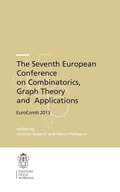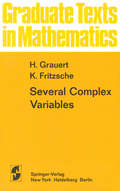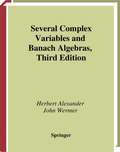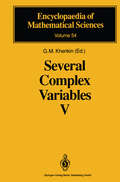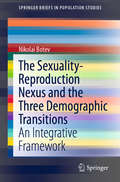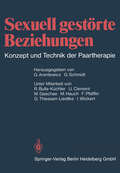- Table View
- List View
Seven Fundamental Concepts in Spacetime Physics (SpringerBriefs in Physics)
by Vesselin PetkovThe book presents seven fundamental concepts in spacetime physics mostly by following Hermann Minkowski’s revolutionary ideas summarized in his 1908 lecture "Space and Time." These concepts are: spacetime, inertial and accelerated motion in spacetime physics, the origin and nature of inertia in spacetime physics, relativistic mass, gravitation, gravitational waves, and black holes. They have been selected because they appear to be causing most misconceptions and confusion in spacetime physics. This second edition has been revised to include additional clarifications, more detailed elaboration of the arguments and also new material published in the interim.
The Seven Pillars of Statistical Wisdom
by Stephen M. StiglerWhat gives statistics its unity as a science? Stephen Stigler sets forth the seven foundational ideas of statistics—a scientific discipline related to but distinct from mathematics and computer science and one which often seems counterintuitive. His original account will fascinate the interested layperson and engage the professional statistician.
The Seventeen Provers of the World: Foreword by Dana S. Scott (Lecture Notes in Computer Science #3600)
by Freek WiedijkCommemorating the 50th anniversary of the first time a mathematical theorem was proven by a computer system, Freek Wiedijk initiated the present book in 2004 by inviting formalizations of a proof of the irrationality of the square root of two from scientists using various theorem proving systems. The 17 systems included in this volume are among the most relevant ones for the formalization of mathematics. The systems are showcased by presentation of the formalized proof and a description in the form of answers to a standard questionnaire. The 17 systems presented are HOL, Mizar, PVS, Coq, Otter/Ivy, Isabelle/Isar, Alfa/Agda, ACL2, PhoX, IMPS, Metamath, Theorema, Leog, Nuprl, Omega, B method, and Minlog.
Seventeenth-Century Indivisibles Revisited (Science Networks. Historical Studies #49)
by Vincent JullienThe tremendous success of indivisibles methods in geometry in the seventeenth century, responds to a vast project: installation of infinity in mathematics. The pathways by the authors are very diverse, as are the characterizations of indivisibles, but there are significant factors of unity between the various doctrines of indivisible; the permanence of the language used by all authors is the strongest sign.These efforts do not lead to the stabilization of a mathematical theory (with principles or axioms, theorems respecting these first statements, followed by applications to a set of geometric situations), one must nevertheless admire the magnitude of the results obtained by these methods and highlights the rich relationships between them and integral calculus.The present book aims to be exhaustive since it analyzes the works of all major inventors of methods of indivisibles during the seventeenth century, from Kepler to Leibniz. It takes into account the rich existing literature usually devoted to a single author. This book results from the joint work of a team of specialists able to browse through this entire important episode in the history of mathematics and to comment it.The list of authors involved in indivisibles´ field is probably sufficient to realize the richness of this attempt; one meets Kepler, Cavalieri, Galileo, Torricelli, Gregoire de Saint Vincent, Descartes, Roberval, Pascal, Tacquet, Lalouvère, Guldin, Barrow, Mengoli, Wallis, Leibniz, Newton.
The Seventh European Conference on Combinatorics, Graph Theory and Applications: EuroComb 2013 (Publications of the Scuola Normale Superiore #16)
by Jaroslav Neset 345 Il Marco PellegriniIn the tradition of EuroComb'01 (Barcelona), Eurocomb'03 (Prague), EuroComb'05 (Berlin), Eurocomb'07 (Seville), Eurocomb'09 (Bordeaux), and Eurocomb'11 (Budapest), this volume covers recent advances in combinatorics and graph theory including applications in other areas of mathematics, computer science and engineering. Topics include, but are not limited to: Algebraic combinatorics, combinatorial geometry, combinatorial number theory, combinatorial optimization, designs and configurations, enumerative combinatorics, extremal combinatorics, ordered sets, random methods, topological combinatorics.
The Seventh International Conference on Vibration Problems ICOVP 2005: 05-09 September 2005, Istanbul, Turkey (Springer Proceedings in Physics #111)
by Esin Inan Ahmet KirisThis volume presents the Proceedings of the Seventh International Conference on Vibration Problems, held in Istanbul, Turkey, September 5-9, 2005. The main objective being to stimulate a broad interdisciplinary research. The topics covered in the book vary from the effect of ground motion on the stochastic response of suspension bridges to coupling effects between different vibrations in rotor-blade systems.
Several Complex Variables (Graduate Texts in Mathematics #38)
by H. Grauert K. FritzscheThe present book grew out of introductory lectures on the theory offunctions of several variables. Its intent is to make the reader familiar, by the discussion of examples and special cases, with the most important branches and methods of this theory, among them, e.g., the problems of holomorphic continuation, the algebraic treatment of power series, sheaf and cohomology theory, and the real methods which stem from elliptic partial differential equations. In the first chapter we begin with the definition of holomorphic functions of several variables, their representation by the Cauchy integral, and their power series expansion on Reinhardt domains. It turns out that, in l:ontrast ~ 2 there exist domains G, G c en to the theory of a single variable, for n with G c G and G "# G such that each function holomorphic in G has a continuation on G. Domains G for which such a G does not exist are called domains of holomorphy. In Chapter 2 we give several characterizations of these domains of holomorphy (theorem of Cartan-Thullen, Levi's problem). We finally construct the holomorphic hull H(G} for each domain G, that is the largest (not necessarily schlicht) domain over en into which each function holomorphic on G can be continued.
Several Complex Variables: Proceedings of the 1981 Hangzhou Conference
by KOHN LU REMMERT SIUIn recent years there has been increasing interaction among various branches of mathematics. This is especially evident in the theory of several complex variables where fruitful interplays of the methods of algebraic geometry, differential geometry, and partial differential equations have led to unexpected insights and new directions of research. In China there has been a long tradition of study in complex analysis, differential geometry and differential equations as interrelated subjects due to the influence of Professors S. S. Chern and L. K. Hua. After a long period of isolation, in recent years there is a resurgence of scientific activity and a resumption of scientific exchange with other countries. The Hangzhou conference is the first international conference in several complex variables held in China. It offered a good opportunity for mathematicians from China, U.S., Germany, Japan, Canada, and France to meet and to discuss their work. The papers presented in the conference encompass all major aspects of several complex variables, in particular, in such areas as complex differential geometry, integral representation, boundary behavior of holomorphic functions, invariant metrics, holomorphic vector bundles, and pseudoconvexity. Most of the participants wrote up their talks for these proceedings. Some of the papers are surveys and the others present original results. This volume constitutes an overview of the current trends of research in several complex variables.
Several Complex Variables and Banach Algebras (Graduate Texts in Mathematics #35)
by Herbert Alexander John WermerA development of some of the principal applications of function theory in several complex variables to Banach algebras. The authors do not presuppose any knowledge of several complex variables on the part of the reader, and all relevant material is developed within the text. Furthermore, the book deals with problems of uniform approximation on compact subsets of the space of n complex variables. This third edition contains new material on maximum modulus algebras and subharmonicity, the hull of a smooth curve, integral kernels, perturbations of the Stone-Weierstrass Theorem, boundaries of analytic varieties, polynomial hulls of sets over the circle, areas, and the topology of hulls. The authors have also included a new chapter commenting on history and recent developments, as well as an updated and expanded reading list.
Several Complex Variables II: Function Theory in Classical Domains Complex Potential Theory (Encyclopaedia of Mathematical Sciences #8)
by L. A. Aizenberg A. B. Aleksandrov A. Sadullaev A. G. Sergeev A. K. Tsikh V. S. Vladimirov A. P. YuzhakovPlurisubharmonic functions playa major role in the theory of functions of several complex variables. The extensiveness of plurisubharmonic functions, the simplicity of their definition together with the richness of their properties and. most importantly, their close connection with holomorphic functions have assured plurisubharmonic functions a lasting place in multidimensional complex analysis. (Pluri)subharmonic functions first made their appearance in the works of Hartogs at the beginning of the century. They figure in an essential way, for example, in the proof of the famous theorem of Hartogs (1906) on joint holomorphicity. Defined at first on the complex plane IC, the class of subharmonic functions became thereafter one of the most fundamental tools in the investigation of analytic functions of one or several variables. The theory of subharmonic functions was developed and generalized in various directions: subharmonic functions in Euclidean space IRn, plurisubharmonic functions in complex space en and others. Subharmonic functions and the foundations ofthe associated classical poten tial theory are sufficiently well exposed in the literature, and so we introduce here only a few fundamental results which we require. More detailed expositions can be found in the monographs of Privalov (1937), Brelot (1961), and Landkof (1966). See also Brelot (1972), where a history of the development of the theory of subharmonic functions is given.
Several Complex Variables III: Geometric Function Theory (Encyclopaedia of Mathematical Sciences #9)
by L. I. RonkinWe consider the basic problems, notions and facts in the theory of entire functions of several variables, i. e. functions J(z) holomorphic in the entire n space 1 the zero set of an entire function is not discrete and therefore one has no analogue of a tool such as the canonical Weierstrass product, which is fundamental in the case n = 1. Second, for n> 1 there exist several different natural ways of exhausting the space
Several Complex Variables IV: Algebraic Aspects of Complex Analysis (Encyclopaedia of Mathematical Sciences #10)
by Dmitrij N. Akhiezer Jürgen Leiterer Arkadij L. Onishchik V. P. PalamodovThis volume of the EMS contains four survey articles on analytic spaces. They are excellent introductions to each respective area. Starting from basic principles in several complex variables each article stretches out to current trends in research. Graduate students and researchers will find a useful addition in the extensive bibliography at the end of each article.
Several Complex Variables. Maryland 1970. Proceedings of the International Mathematical Conference, Held at College Park, April 6-17, 1970: Part 2 (Lecture Notes in Mathematics #185)
by John HorvathSeveral Complex Variables. Maryland 1970. Proceedings of the International Mathematical Conference, Held at College Park, April 6-17, 1970: Part 1 (Lecture Notes in Mathematics #155)
by John HorvathSeveral Complex Variables V: Complex Analysis in Partial Differential Equations and Mathematical Physics (Encyclopaedia of Mathematical Sciences #54)
by C. A. Berenstein G. M. Khenkin A. Yu. Morozov R. G. Novikov A. M. Perelomov D. C. StruppaThis volume of the Encyclopaedia contains three contributions in the field of complex analysis; on mean periodicity and convolutionequations, Yang-Mills fields and the Radon-Penrose transform, and stringtheory. It is immensely useful to graduate students and researchers in complex analysis, differential geometry, quantum field theory, string theory and general relativity.
Several Complex Variables VII: Sheaf-Theoretical Methods in Complex Analysis (Encyclopaedia of Mathematical Sciences #74)
by F. Campana G. Dethloff H. Grauert Thomas Peternell R. RemmertThe first survey of its kind, written by internationally known, outstanding experts who developed substantial parts of the field. The book contains an introduction written by Remmert, describing the history of the subject, and is very useful to graduate students and researchers in complex analysis, algebraic geometry and differential geometry.
Several Real Variables (Springer Undergraduate Mathematics Series)
by Shmuel KantorovitzThis undergraduate textbook is based on lectures given by the author on the differential and integral calculus of functions of several real variables. The book has a modern approach and includes topics such as:•The p-norms on vector space and their equivalence•The Weierstrass and Stone-Weierstrass approximation theorems•The differential as a linear functional; Jacobians, Hessians, and Taylor's theorem in several variables•The Implicit Function Theorem for a system of equations, proved via Banach’s Fixed Point Theorem•Applications to Ordinary Differential Equations•Line integrals and an introduction to surface integralsThis book features numerous examples, detailed proofs, as well as exercises at the end of sections. Many of the exercises have detailed solutions, making the book suitable for self-study. Several Real Variables will be useful for undergraduate students in mathematics who have completed first courses in linear algebra and analysis of one real variable.
Sex, Drugs, and Body Counts: The Politics of Numbers in Global Crime and Conflict
by Peter Andreas Kelly M. GreenhillAt least 200,000-250,000 people died in the war in Bosnia. "There are three million child soldiers in Africa." "More than 650,000 civilians have been killed as a result of the U.S. occupation of Iraq." "Between 600,000 and 800,000 women are trafficked across borders every year." "Money laundering represents as much as 10 percent of global GDP." "Internet child porn is a $20 billion-a-year industry." These are big, attention-grabbing numbers, frequently used in policy debates and media reporting. Peter Andreas and Kelly M. Greenhill see only one problem: these numbers are probably false. Their continued use and abuse reflect a much larger and troubling pattern: policymakers and the media naively or deliberately accept highly politicized and questionable statistical claims about activities that are extremely difficult to measure. As a result, we too often become trapped by these mythical numbers, with perverse and counterproductive consequences.This problem exists in myriad policy realms. But it is particularly pronounced in statistics related to the politically charged realms of global crime and conflict-numbers of people killed in massacres and during genocides, the size of refugee flows, the magnitude of the illicit global trade in drugs and human beings, and so on. In Sex, Drugs, and Body Counts, political scientists, anthropologists, sociologists, and policy analysts critically examine the murky origins of some of these statistics and trace their remarkable proliferation. They also assess the standard metrics used to evaluate policy effectiveness in combating problems such as terrorist financing, sex trafficking, and the drug trade.
The Sexuality-Reproduction Nexus and the Three Demographic Transitions: An Integrative Framework (SpringerBriefs in Population Studies)
by Nikolai BotevThis monograph outlines an integrative framework that conceptualizes the role of relations of control in human reproduction and long-term population dynamics. It thereby draws on the demographic transition theory, sexuality studies, Foucault’s concept of bio-power and sexuality as key to social control, cognate concepts and theories, and on findings from demography, anthropology, archaeology and other disciplines. The framework is based on the premise that four demographic regimes can be identified over the course of human history. They are defined by the primary locus and modus of control over reproduction. The framework questions some of the basic postulates in population studies, including how demographic transitions are interpreted. As such this book contributes to the debate on the longer-term trends in population dynamics and the relations of power and control in human reproduction.
Sexuell gestörte Beziehungen: Konzept und Technik der Paartherapie
by R. Bulla-Küchler U. Clement M. Gaschae M. Hauch F. Pfäfflin G. Thiessen-Liedtke I. WickertDie Abteilung für Sexualforschung der Psychiatrischen Universitätsklinik in Ham burg führte 1976 eine Bedarfsanalyse im Hinblick auf die ärztliche/psychotherapeu tische Versorgung von Patienten mit sexuellen Störungen durch. Insgesamt ver schickten wir in Hamburg 650 Fragebögen: an alle niedergelassenen Urologen, Gy näkologen, Dermatologen und Nervenärzte, an jeden fünften Internisten und anje den zehnten praktischen Arzt. Der Fragebogen erfaßte, wie viele Patienten den Arzt wegen einer sexuellen Störung in einer Woche aufsuchten, um welches Problem es sich handelte und welche Behandlung der Arzt vornahm. Etwa 250 Ärzte, also 40%, schickten auswertbare Fragebögen zurück. Wenn man von der überaus vorsichtigen Annahme ausgeht, daß diejenigen Ärzte, die die Fragebögen nicht zurückschickten, keinen einzigen Patienten mit sexuellen Störungen gehabt hatten, dann suchen in Hamburg in einer Woche mindestens 1100 Patienten einen Arzt wegen sexueller Stö rungen auf. Tausend dieser Patienten, also etwa 90%, haben eine sexuelle Funk tionsstörung, das heißt sie klagen über Erektions- und Ejakulationsstörungen bzw. über Erregungs-/Orgasmusstörungen oder Vaginismus; insgesamt sind es mehr Frauen als Männer. Die Interventionen der Ärzte beschränken sich notgedrungen bei den meisten dieser Patienten auf unspezifische Beratungsgespräche, die selten ausreichend helfen, und auf die im Regelfall sinnlose Verabreichung von Medika menten wie Psychopharmaka oder Hormonpräparate. Die Folge dieses Mißstandes ist eine schwere und vermeidbare Chronifizierung sexueller Störungen: Wenn die Patienten in unsere Poliklinik kommen, sind sie im Durchschnitt schon vier Jahre lang von zwei bis drei Ärzten erfolglos behandelt worden.
Shadow Algorithms Data Miner
by Andrew Woo Pierre PoulinShadow Algorithms Data Miner provides a high-level understanding of the complete set of shadow concepts and algorithms, addressing their usefulness from a larger graphics system perspective. It discusses the applicability and limitations of all the direct illumination approaches for shadow generation.With an emphasis on shadow fundamentals, the boo
The Shadow of Black Holes: An Analytic Description (SpringerBriefs in Physics)
by Arne GrenzebachThis book introduces an analytic method to describe the shadow of black holes. As an introduction, it presents a survey of the attempts to observe the shadow of galactic black holes. Based on a detailed discussion of the Plebański–Demiański class of space-times, the book derives analytical formulas for the photon regions and for the boundary curve of the shadow as seen by an observer in the domain of outer communication. It also analyzes how the shadow depends on the motion of the observer. For all cases, the photon regions and shadows are visualized for various values of the parameters. Finally, it considers how the analytical formulas can be used for calculating the horizontal and vertical angular diameters of the shadow, and estimates values for the black holes at the centers of our Galaxy near Sgr A* and of the neighboring galaxy M87.
Shadowing and Hyperbolicity (Lecture Notes in Mathematics #2193)
by Sergei Yu Pilyugin Kazuhiro SakaiFocusing on the theory of shadowing of approximate trajectories (pseudotrajectories) of dynamical systems, this book surveys recent progress in establishing relations between shadowing and such basic notions from the classical theory of structural stability as hyperbolicity and transversality. Special attention is given to the study of "quantitative" shadowing properties, such as Lipschitz shadowing (it is shown that this property is equivalent to structural stability both for diffeomorphisms and smooth flows), and to the passage to robust shadowing (which is also equivalent to structural stability in the case of diffeomorphisms, while the situation becomes more complicated in the case of flows). Relations between the shadowing property of diffeomorphisms on their chain transitive sets and the hyperbolicity of such sets are also described. The book will allow young researchers in the field of dynamical systems to gain a better understanding of new ideas in the global qualitative theory. It will also be of interest to specialists in dynamical systems and their applications.
Shadowing in Dynamical Systems: Theory and Applications (Mathematics and Its Applications #501)
by K.J. PalmerIn this book the theory of hyperbolic sets is developed, both for diffeomorphisms and flows, with an emphasis on shadowing. We show that hyperbolic sets are expansive and have the shadowing property. Then we use shadowing to prove that hyperbolic sets are robust under perturbation, that they have an asymptotic phase property and also that the dynamics near a transversal homoclinic orbit is chaotic. It turns out that chaotic dynamical systems arising in practice are not quite hyperbolic. However, they possess enough hyperbolicity to enable us to use shadowing ideas to give computer-assisted proofs that computed orbits of such systems can be shadowed by true orbits for long periods of time, that they possess periodic orbits of long periods and that it is really true that they are chaotic. Audience: This book is intended primarily for research workers in dynamical systems but could also be used in an advanced graduate course taken by students familiar with calculus in Banach spaces and with the basic existence theory for ordinary differential equations.
Shadowing in Dynamical Systems (Lecture Notes in Mathematics #1706)
by Sergei Yu. PilyuginThis book is an introduction to the theory of shadowing of approximate trajectories in dynamical systems by exact ones. This is the first book completely devoted to the theory of shadowing. It shows the importance of shadowing theory for both the qualitative theory of dynamical systems and the theory of numerical methods. Shadowing Methods allow us to estimate differences between exact and approximate solutions on infinite time intervals and to understand the influence of error terms. The book is intended for specialists in dynamical systems, for researchers and graduate students in the theory of numerical methods.




